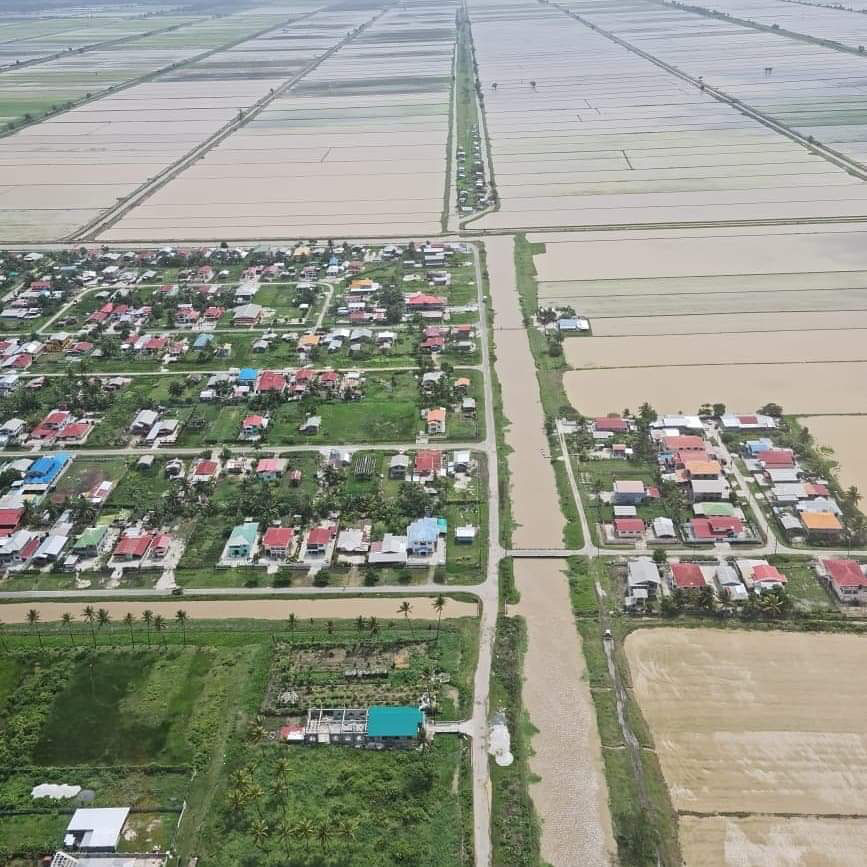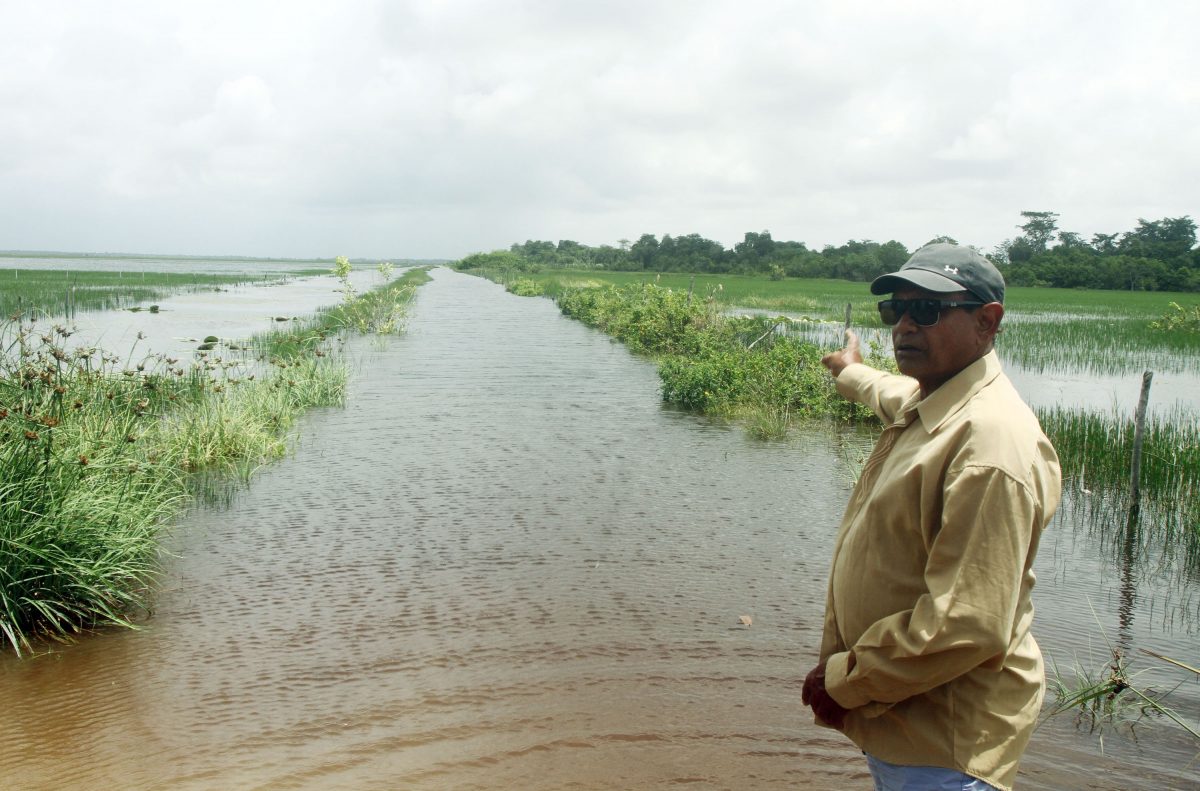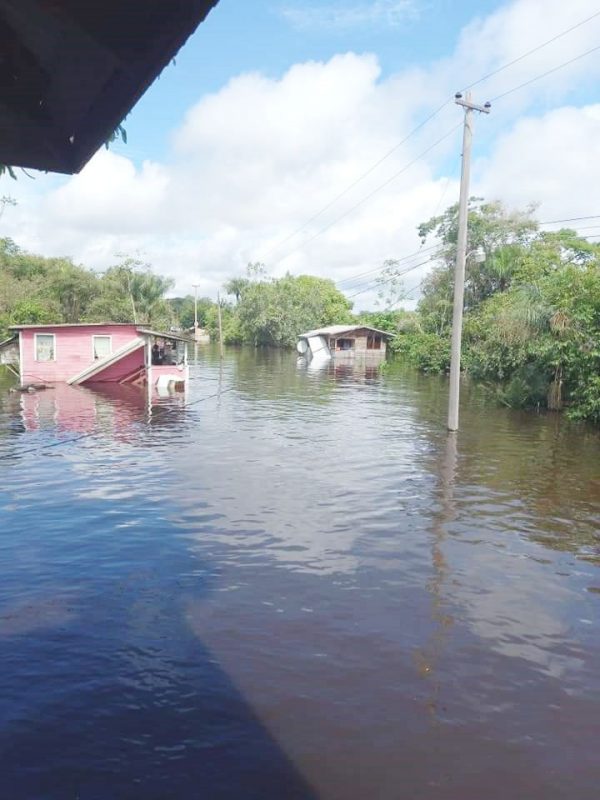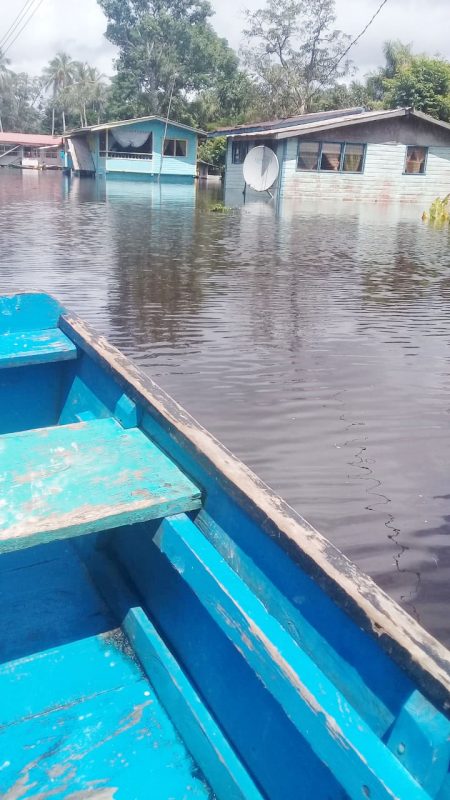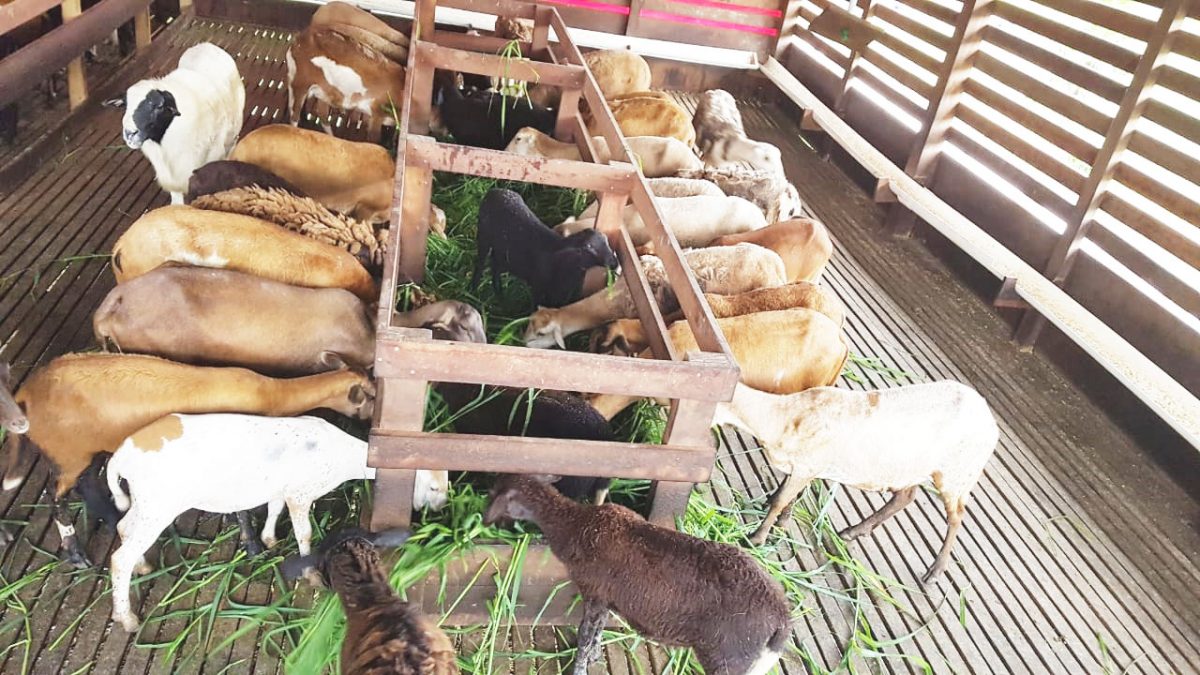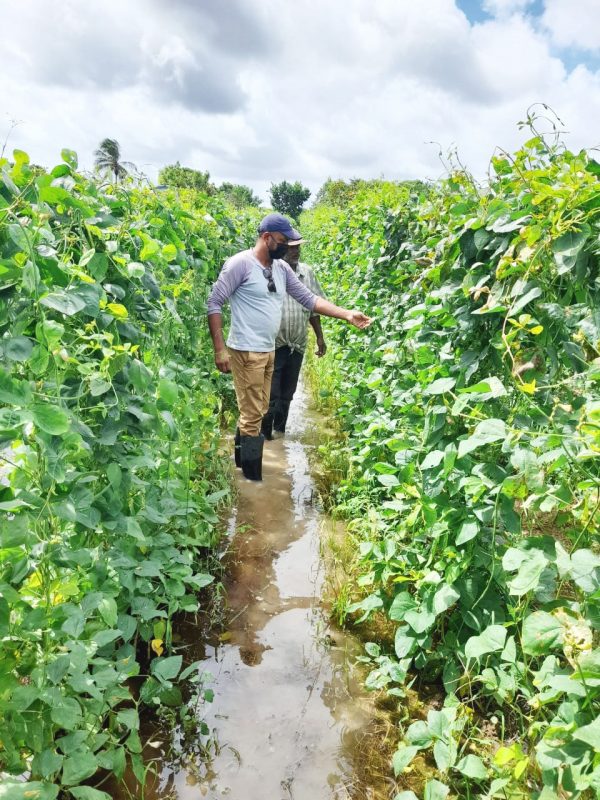Seventy-five per cent of families from the Kwakwani Waterfront, Region 10, have been forced to evacuate their homes in the Berbice River due to extreme flooding.
Water levels over the past two days have risen close to 14 feet, Regional Councillor Elroy Adolph informed while speaking with Stabroek News via phone yesterday. He explained that four shelters have since been set up, two of which are occupied by 33 persons while others have opted to move in with family and friends. He added that 43 families have been evacuated from Lamp Island and additional areas are currently in the process of being set up to serve as shelters.
Adolph stated that mattresses are needed to accommodate those families moving into shelters. While the Civil Defence Commission (CDC) has provided some, there is a growing need as more persons are forced to move into shelters.
“We recently got permission from the REdO [Regional Education Officer] to use the student hostel and the cooks to prepare meals for these families in shelters. The shelters are currently being monitored by the Civil Defence Commission but we are giving them our support,” Adolph explained.
Communities in the Berbice River have seen severe flooding due to the overtopping of the river coupled with persistent seasonal rainfall. It has been almost three weeks since the communities have been heavily flooded and they are witnessing record heights of water on lands.
The Regional Councillor explained that daily, families are reporting not only losses of crops and livestock but also electrical appliances and furniture.
“This has got to be the biggest flood we have seen in decades. From what the older people are telling me, the biggest flood was years ago. What is worrying for the people is that the floods came before the heavy rain falls in June. Water is high now and we are now starting June and everyone knows June is when the rain falls more,” he noted.
Touching on food supplies he said that the CDC and the regional bodies have been assisting with food hampers for which they are grateful.
“We have distributed hampers from the CDC and then the RDC and the NDC donated a few and a private citizen from Linden donated about a hundred so we are happy for that. But like I have said before, not only those who are flooded are unable to fend for themselves but this flooding have a ripple effect. Many persons are unable to go about their jobs and earn. They need help also,” he added.
Meanwhile, APNU+AFC Member of Parliament Jermaine Figueira during a press conference yesterday stated that several communities in the region remain inundated and many are reporting losses.
He acknowledged that while the regional authorities are trying their best, he is nevertheless calling on government to step up its response to flood-affected families.
With the communities waterlogged, Figueira said the chances of an outbreak of water-borne diseases are high. He urged the Health Ministry to launch an action plan to combat any possibility of outbreaks not only in the region but across the country.
Entire Pomeroon
Regional Executive Officer (REO) of Region Two (Pomeroon/Supenaam), Devanand Ramdatt yesterday told Stabroek News that the entire Pomeroon remains flooded. He informed that water levels have receded from Charity, which was heavily flooded on Sunday.
“We’ve never seen anything like this before. The rate at which the entire Pomeroon was flooded, is something that even the elderly people of Pomeroon are also saying that they’ve never seen anything like this before. Apart from the Pomeroon, two Amerindian communities, Kabakaburi and St. Monica… also received hampers. We’re in the process of securing more hampers,” Ramdatt said on Sunday.
He iterated that it is too early to paint a picture of the devastation caused by the flood. As a result, three teams comprising officers from key government agencies are preparing to visit several communities today to not only gain a first-hand understanding of the flooding situation but to assess the needs of families and prepare post- flooding plans.
He stated that during the outreaches they will look at the educational and health needs of children and families. On the same outreaches, health officials will also be advising persons on the best possible way to navigate the flooding.
Yesterday, the CDC with support from the Guyana Defence Force (GDF) conducted an aerial assessment of flooding in the region. The team was led by Director General, Lieutenant Colonel Kester Craig while CDC volunteer, Julian Cadogan, provided Geographic Information System (GIS) mapping to help the CDC in understanding how to strategically deploy resources while Quincy Scotland provided technical support based on the impact of the flood in farming communities. The team made a short stop at Karawab, Region Two, where residents disclosed that the water level had receded.
The Regional Democratic Council (RDC) had recently distributed food hampers to residents who suffered damage to property and loss of crops in the village.
APNU+AFC Member of Parliament Shurwayne Holder at the press conference yesterday explained that from his visits to the Pomeroon, the community of Akawini, Lower Pomeroon, is one of the hardest-hit villages.
“The entire Pomeroon basically is flooded but of those areas, the Akawini Creek, they seem to be the hardest hit. What they are saying [is that] the water has reached new heights. There was a flood during Christmas season and now they are saying the water is higher,” Holder said during the press conference.
He added that villagers have related that the koker doors were “blown away” resulting in higher water levels than the flooding in December 2020.
Villagers of the indigenous community, who rely heavily on farming have lost their crops and livestock to the floods also, he said.
“…This is the second time in about six months they are facing a flood so they are affected. But there are other heavy-hit areas like Hackney, Aberdeen, Friendship, and Marlborough… those areas in the lower Pomeroon River but in the upper Pomeroon you have Karawab, Siriki, Jacklow, and others,” he stated.
He alleged that relief supplies are not being distributed equally. He said too that some communities are yet to be visited by any officials from the Regional Democratic Council or government.
However, Ramdatt told Stabroek News that the regional outreach is scheduled for two days during which they will be visiting most communities. According to his itinerary, he stated that he will be visiting Akawini on Thursday.
Over in Region Five, Regional Chairman Vickchand Ramphal said that they have been on the ground providing assistance to affected farmers and households in Ithaca and along the Mahaicony, Abary and Mahaica rivers.
Ramphal yesterday dismissed comments made by villagers of Big Biaboo and Grass Hook that he has not visited to see their plight.
Yesterday he told Stabroek News that on Sunday, he had visited the community and toured the area to assess the flooding situation.
He stated that during his outreach he met with a number of farmers, who related their dilemma to him.
“We have deployed excavators across these flooded communities especially in the riverine areas to help build up and strengthen dams to prevent any breaches. We have also been distributing hampers to all the affected families in these areas,” he said.
He added that they are also working with Guyana Defence Force reserve ranks to distribute water, sanitation and food hampers to communities across the region including Moraikobai, which is heavily affected.
Ramphal also said that they are currently collaborating with the Guyana Livestock and Development Authority to distribute bran and molasses to livestock farmers. The RDC, he noted, is also engaged in discussions to find higher grounds to relocate cattle in instances where their pasture is flooded.
During a visit by Stabroek News to Grass Hook and Big Biaboo, Mahaica River, farmers expressed frustration as floodwater continued to rise, threatening the survival of their remaining crops and livestock.
